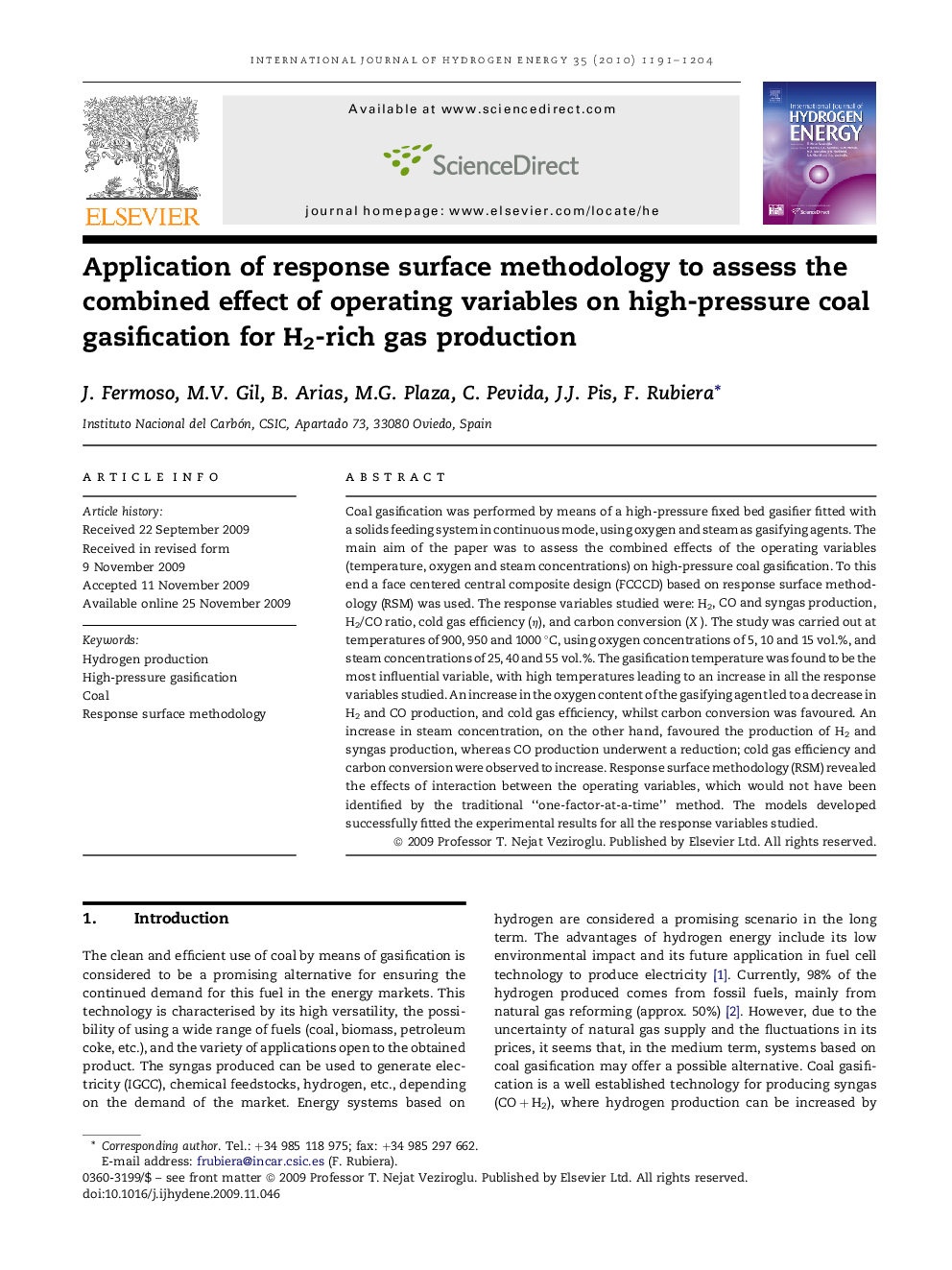| Article ID | Journal | Published Year | Pages | File Type |
|---|---|---|---|---|
| 1273510 | International Journal of Hydrogen Energy | 2010 | 14 Pages |
Coal gasification was performed by means of a high-pressure fixed bed gasifier fitted with a solids feeding system in continuous mode, using oxygen and steam as gasifying agents. The main aim of the paper was to assess the combined effects of the operating variables (temperature, oxygen and steam concentrations) on high-pressure coal gasification. To this end a face centered central composite design (FCCCD) based on response surface methodology (RSM) was used. The response variables studied were: H2, CO and syngas production, H2/CO ratio, cold gas efficiency (η), and carbon conversion (X). The study was carried out at temperatures of 900, 950 and 1000 °C, using oxygen concentrations of 5, 10 and 15 vol.%, and steam concentrations of 25, 40 and 55 vol.%. The gasification temperature was found to be the most influential variable, with high temperatures leading to an increase in all the response variables studied. An increase in the oxygen content of the gasifying agent led to a decrease in H2 and CO production, and cold gas efficiency, whilst carbon conversion was favoured. An increase in steam concentration, on the other hand, favoured the production of H2 and syngas production, whereas CO production underwent a reduction; cold gas efficiency and carbon conversion were observed to increase. Response surface methodology (RSM) revealed the effects of interaction between the operating variables, which would not have been identified by the traditional “one-factor-at-a-time” method. The models developed successfully fitted the experimental results for all the response variables studied.
